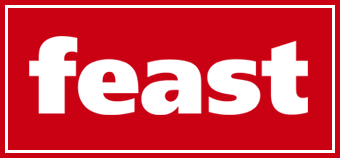In today’s digital world, having a well-designed and functional website is more important than ever. For businesses of all sizes, an attractive, user-friendly website can serve as the cornerstone of an online presence. When it comes to creating a successful online platform, the process of Web tasarım ve geliştirme(web design and development) goes hand in hand. Both aspects are essential to building a site that not only looks appealing but also works seamlessly, offering a great user experience. Whether you’re launching a new site or revamping an existing one, understanding the core elements of web design and development can set you up for long-term success.
Why Web Design and Development Go Hand-in-Hand
Web design and development are often seen as two distinct processes, but in reality, they are tightly intertwined. Web design is about creating the visual elements that make your website attractive and easy to navigate, while web development focuses on the technical aspects—how those design elements are implemented and how the site functions on the backend.
Effective web design and development go beyond mere aesthetics. A visually appealing design might attract visitors initially, but without the proper development work to ensure the site functions smoothly, users may leave quickly. Development focuses on making sure that the site loads quickly, is mobile-responsive, works across different browsers, and includes the functionality users expect—such as contact forms, shopping carts, and search features.
When both aspects are balanced properly, the result is a website that is not only visually striking but also delivers an intuitive, seamless experience that drives engagement and conversion.
The Key Components of Web Design
A well-designed website is more than just a beautiful homepage. It involves a combination of visual elements and functionality that creates an immersive and user-friendly experience. Some key elements of web design include:
- Layout and Structure: The layout dictates how content is organized on a webpage. A clean, easy-to-follow structure helps users find information quickly. A well-organized navigation menu, clearly labeled sections, and consistent design across all pages make it easy for visitors to understand how to navigate your site.
- Typography: Fonts and text styles are more than just decorative; they play a key role in readability and usability. A good web designer will use fonts that are easy to read, while also reflecting your brand’s personality. Typography choices should support the overall design and make content legible across all devices.
- Color Scheme: Colors evoke emotions and set the tone for your site. Whether you’re going for a professional look or a more creative, fun vibe, the right color palette helps convey the message you want to communicate and enhances the user experience. Consistency in color use across pages is also important for branding and aesthetics.
- Imagery: High-quality images and graphics are crucial for enhancing your design. Whether it’s product images, backgrounds, or icons, imagery adds depth and engagement to your website. It’s also important that images are optimized for fast loading times.
The Role of Web Development
While web design focuses on the user interface, web development is all about functionality and coding. Partnering with a reputable web design Chicago agency will help ensure that the website will perform as intended and is optimized for all devices.. Some crucial aspects of web development include:
- Responsive Design: More than half of all web traffic comes from mobile devices. A responsive design ensures your site adjusts seamlessly to any screen size, providing an optimal viewing experience across smartphones, tablets, and desktops.
- SEO Optimization: Development teams play a key role in SEO (Search Engine Optimization). A well-developed website is structured in a way that search engines can easily crawl, index, and rank your pages. Proper SEO implementation—such as meta tags, alt text for images, and clean code—helps your website rank higher in search results, driving more organic traffic.
- Website Speed: Speed is a crucial factor for user satisfaction. Websites that load slowly risk losing visitors, leading to higher bounce rates and lower conversions. Optimizing images, reducing unnecessary code, and using fast hosting services are all critical steps in ensuring a website’s speed.
- Security: Security is a top priority for any website, particularly e-commerce sites. Developers must implement SSL certificates, use secure coding practices, and stay up to date with security patches to protect users’ data and prevent cyberattacks.
Case Study: A Local Business Website Overhaul
Let’s consider a small business that sells handmade crafts and wanted to take their business online. Their old website was outdated and not mobile-friendly, leading to a high bounce rate and low conversion rate. The business owner decided to work with a web design and development agency to redesign the site and improve its functionality.
The design team focused on creating a visually appealing, modern layout that aligned with the business’s brand. They incorporated a gallery-style homepage to showcase the products, as well as a user-friendly navigation system to allow visitors to easily browse different categories.
On the development side, the team ensured the website was responsive, loading quickly across all devices. They integrated an e-commerce platform to streamline the shopping experience and added secure payment gateways. The site was also optimized for SEO, ensuring the business could rank higher in search engine results.
The results were impressive. Within the first month of launching the new site, the business saw a 50% increase in online sales, with a significant decrease in bounce rates. Customers appreciated the ease of navigation and mobile-friendly experience, and the business owner reported that their online presence helped them expand into new markets.
Conclusion
A successful website isn’t just about good design or functional development in isolation—it’s about integrating both to create a cohesive and enjoyable user experience. When you invest in high-quality web design and development, you’re not just creating a digital brochure; you’re building a platform that will help your business grow, engage customers, and build trust. From responsive design to SEO optimization, the combination of design and development ensures that your site not only looks great but performs at its best. Whether you’re starting from scratch or looking to improve an existing site, a balanced approach to design and development is essential for creating a lasting digital presence.



